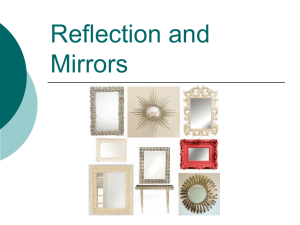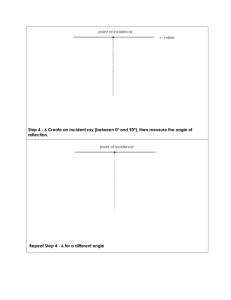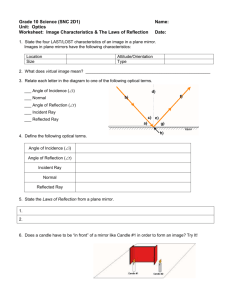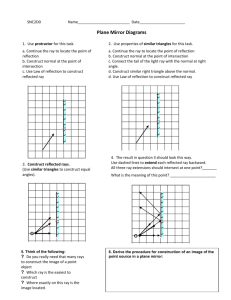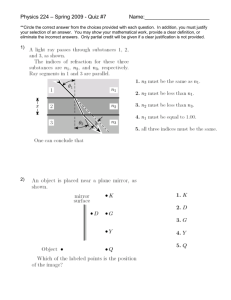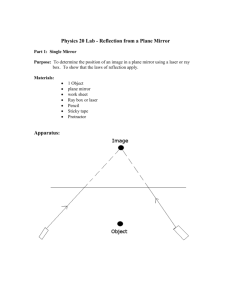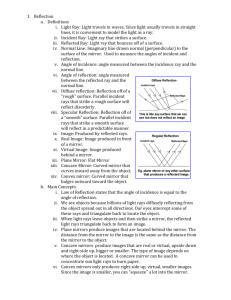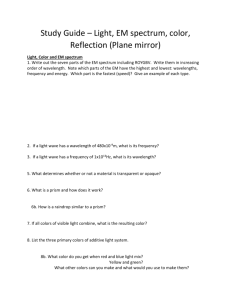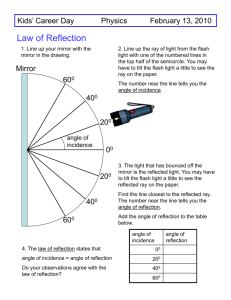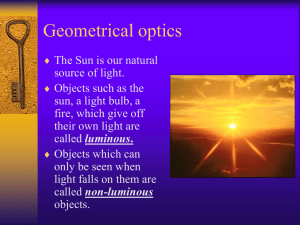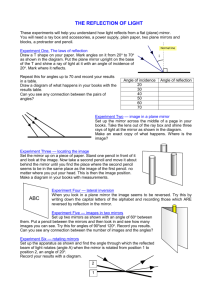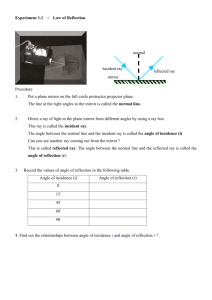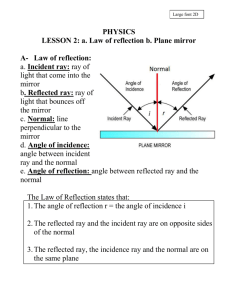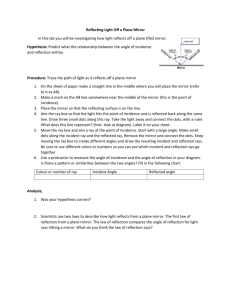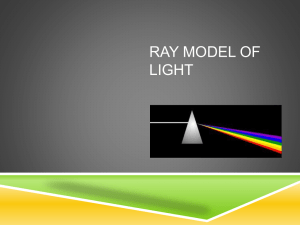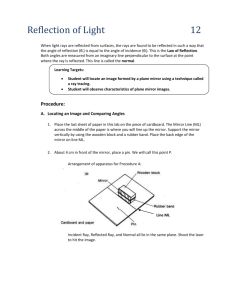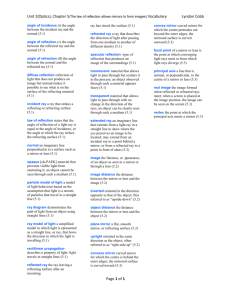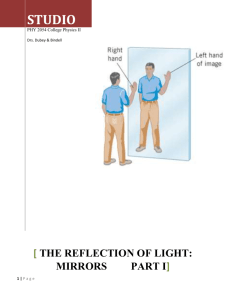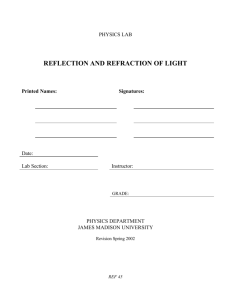3. Reflecting light of a plane mirror lab
advertisement
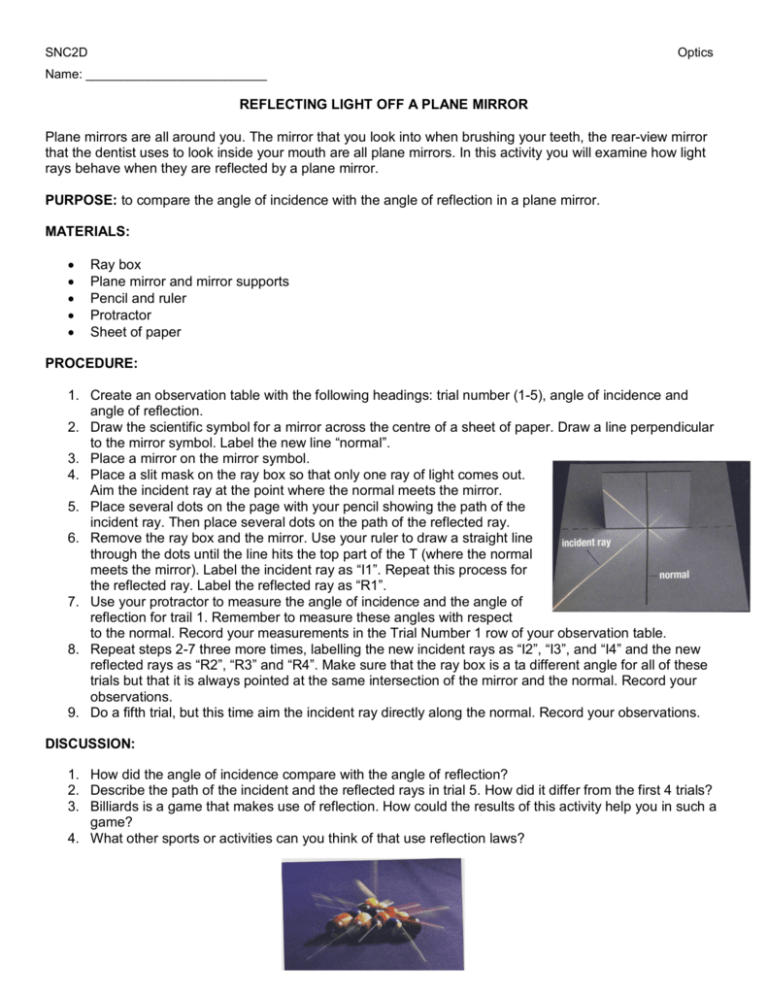
SNC2D Optics Name: __________________________ REFLECTING LIGHT OFF A PLANE MIRROR Plane mirrors are all around you. The mirror that you look into when brushing your teeth, the rear-view mirror that the dentist uses to look inside your mouth are all plane mirrors. In this activity you will examine how light rays behave when they are reflected by a plane mirror. PURPOSE: to compare the angle of incidence with the angle of reflection in a plane mirror. MATERIALS: Ray box Plane mirror and mirror supports Pencil and ruler Protractor Sheet of paper PROCEDURE: 1. Create an observation table with the following headings: trial number (1-5), angle of incidence and angle of reflection. 2. Draw the scientific symbol for a mirror across the centre of a sheet of paper. Draw a line perpendicular to the mirror symbol. Label the new line “normal”. 3. Place a mirror on the mirror symbol. 4. Place a slit mask on the ray box so that only one ray of light comes out. Aim the incident ray at the point where the normal meets the mirror. 5. Place several dots on the page with your pencil showing the path of the incident ray. Then place several dots on the path of the reflected ray. 6. Remove the ray box and the mirror. Use your ruler to draw a straight line through the dots until the line hits the top part of the T (where the normal meets the mirror). Label the incident ray as “I1”. Repeat this process for the reflected ray. Label the reflected ray as “R1”. 7. Use your protractor to measure the angle of incidence and the angle of reflection for trail 1. Remember to measure these angles with respect to the normal. Record your measurements in the Trial Number 1 row of your observation table. 8. Repeat steps 2-7 three more times, labelling the new incident rays as “I2”, “I3”, and “I4” and the new reflected rays as “R2”, “R3” and “R4”. Make sure that the ray box is a ta different angle for all of these trials but that it is always pointed at the same intersection of the mirror and the normal. Record your observations. 9. Do a fifth trial, but this time aim the incident ray directly along the normal. Record your observations. DISCUSSION: 1. How did the angle of incidence compare with the angle of reflection? 2. Describe the path of the incident and the reflected rays in trial 5. How did it differ from the first 4 trials? 3. Billiards is a game that makes use of reflection. How could the results of this activity help you in such a game? 4. What other sports or activities can you think of that use reflection laws?
